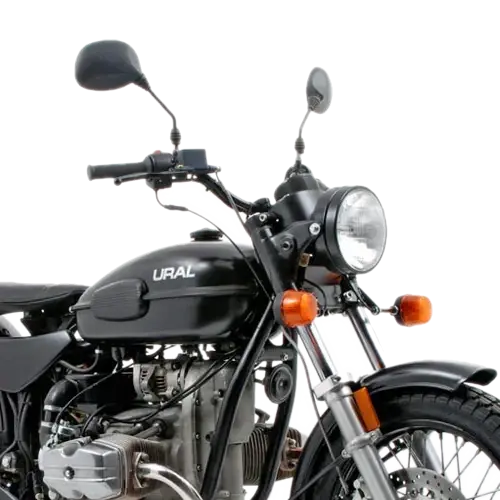Refrigerator
All you need to do, is figure out a way to use electro magnetic radiation to slow down particles.
It’s just a small technical challenge.
From these 2 sentences, I have written a 52 pages PowerPoint presentation to get funds from Wall Street.
I expect to find ~$2 bn.
See you in jail!
Hah! My ChatGPT bot did 60 slides in 90 seconds, and submitted it hours before yours. See YOU in court!
Hah! Jokes on both of you, I submitted a super generic patent for “cold microwave” YEARS ago to leech off of anyone who manages to actually invent this technology in my lifetime. See you BOTH in court (and probably also jail)!
Calm down there Elizabeth Holmes
Technically that’s already a thing. It is pretty expensive compared to a normal refrigerator though…
Easy, just invert the polarity of the microwaves
if you see a dark area you can turn on a flashlight to emit light towards the area and make it not-dark.
If you see a lit area and you want it unlit, there is no anti-flashlight you can point towards it to suck the light out.
Similar kind of thing, heat can only be given, not taken. heating stuff up is easy, but for cooling the best you can do in most cases is to make it easier for the thing to give you its heat (ex by the atmosphere colder), but you can’t force it.
This is fundamentally not true.
Light is made of electromagnetic waves. If you can control the timing of those waves precisely enough, you can add another light with the opposite phase (an inverted wave) that will cancel out the other light.
This is what happens in the famous “double slit experiment”. It’s also the same principal as noise cancelling headphones albeit with sound pressure waves instead of EM waves.
Scientists have actually cooled atoms very close to absolute zero by shining a laser at them
I said “in most cases”. I am aware that it is possible. We’re looking at a macroscopic system here though. A microwave, not a couple of atoms in a lab. good luck cooling a couple of atoms in the center of an opaque blob of food with a laser
I completely agree with your third point where you said “in most cases”.
It was your first two points trying to create an analogy with light that I was responding to
I mean like the analogy holds until quantum mechanics - which is pretty good - no need to nitpick
Neither EM wave interference nor noise cancelling headphones are quantum mechanics. It’s not nitpicking.
quantification of light as a particle and the theory of its wave particle duality yes is by definition quantum mechanics, which was proven first by the double slit expierament. Up until then 2 light sources never canceled each other out so it was assumed light is 100% quantifiable and a particle.
(quantify is actually where the word quantum comes from)
noise canceling headphones you’re good for tho, the existence of waves is a different subject
Edit: and IG if we want to talk about fundamentally untrue then, your comments also wrong cause its a pretty big thing in science that light ISNT just a wave… but of course I’m not being nitpicky right?
-
It was theorized that light could be a wave way before the double slit experiment. Like, a century before. So no, it wasn’t “assumed light is 100%” quantized before that experiment.
-
Anything that is a wave can be cancelled, so this idea was baked right into the wave theory of light, they just didn’t have the ability to control light precisely enough to prove it until the double slit experiment. You don’t need quantum mechanics to explain wave theory, it just happened that the double slit experiment, while proving that light behaved like a wave, also showed other characteristics that it was also behaving in a quantized fashion. The fact that light is quantized into photons has nothing to do with the fact that they cancel so you really don’t need quantum mechanics to explain it. The reason light can be cancelled is exactly the same as every other thing in physics that behaves like a wave.
-
The word quantum comes from the word quantization not “quantify”. Those two words mean different things
-
Light is a wave. It also happens to be a particle. So the “existence of waves” is not a different subject. It’s exactly this subject
Edit: Love the snarky edit to a post full of being confidently wrong. I’m going to go engage with others. Good day, sir/ma’am!
Quantify and quantization youre saying have different root words? their similarity in definition and to the Latin word quantus is just coincidence? (whoops nitpicky ahem ahem)
And of course it was hypothesized but never proven, double slit pushed it towards theory/fact
but also I’m not sure if you know where the line of quantum mechanics to newtonian mechanics are, cause newton definitely didn’t theorize too much about the energy of light
-
deleted by creator
deleted by creator
Laser cooling exists, but I don’t suppose you can afford one or want your beer on 2°K
it also helps to be cooling a single atom at a time
My god where does it end with you beer snobs??
A lot of laser coolers were built exactly for cooling single atoms (to do scientific research)
How does that work?? Genuinely curious.
It’s unintuitive, but super cool! There’s a great video by Physics Girl and Veritasium that explain it better than I ever could here.
First, the wavelength of the laser (think of it as the “color” of the laser) is chosen such that the energy of the photons is just under the energy state of the atoms that you are trying to cool.
Now, when the atom is moving toward the source of the laser, this causes the atom to “see” a higher energy. This is called Doppler shift and is a very well-known effect in anything that emits waves and is moving. In fact, you’ve experienced it before when you hear a car horn – as it moves towards you it has a higher pitch and as it moves away from you it has a lower pitch.
So, for atoms moving toward the source the see the energy rise just enough to absorb the photon and move to a higher energy state. Inevitably, the atom will want to move to a lower energy state (as all matter does) and will end up ejecting a new photon in a random direction. In order to maintain the conservation of momentum, this means that the photon will likely be ejected in a way that counteracts the direction it was previously moving, effectively slowing it down. Since heat is a measure of how fast atoms are moving, this means that atom has cooled down.
For atoms moving away from the laser source, they are unable to absorb the photons because the Doppler shift acts in the opposite direction, and they are completely unable to absorb the photons.
So as a result of all this, it is possible to slow down atoms moving in a very specific direction, without affecting the other atoms. This means you can systematically slow atoms down which means you can systematically cool things down.
Edit: Here’s a piped link to the youtube video above in case you’re privacy-conscious, however, Dianna (aka Physics Girl) has been bed-ridden with Long COVID for a while now so it would be great if you could contribute to her Patreon in lieu of the ad revenue
Here is an alternative Piped link(s):
great video by Physics Girl and Veritasium
Piped is a privacy-respecting open-source alternative frontend to YouTube.
I’m open-source, check me out at GitHub.
Great bot! But please see the edit to my post
Thank you!! This was a fantastic explanation! Great ELI5 style, I feel I don’t even need to watch that video - even though Veritasium is amazing.
Basicly photons are shot against an atom to slow it down (the slower the elements move the “colder” something gets)
The problem is that cold is merely the absence of heat, you can’t inject cold into something or generate cold, because there is no such thing as cold. It’s kind of like how we can make a light bulb, but we can’t make a dark bulb.
Maybe we could start manufacturing mini black holes to build the dark bulbs!
Sadly, a mini black hole would suck up everything around it. Much like a tiny Katamari Damacy, it would quite quickly consume everyone and everything around it. Of course after not too long it would become a regular sized black hole.
Some mini black holes do not grow into black holes. They collapse. The issue is that they aren’t stable for any decent length of time. Fractions of a nanosecond.
A capitalist haven, think of how many black holes one could sell!
That’s the best explanation I have seen for heat.
I’ve ran equations for heat so I get it more than most, but always found it difficult to explain.
In reductively simple terms heat is really easy to generate. In fact pretty much everything we do creates extra heat entirely on accident, so a device than make things hot on purpose is actually surprisingly simple. It’s much harder to get rid of. The only economical way we’ve found of managing it is by using to phase change of refrigerants to pump it out of enclosed spaces, which is how refrigerators and air conditioners currently work. Everything else would be more complex, less efficient, or both. So if such a thing is even possible it would almost certainly be much more expensive
It’s called a freezer and it just takes a bit longer.
There’s a lot of posts here not answering the question or saying it’s impossible.
A reverse microwave is possible.
The 1997 Nobel Prize in physics was awarded for the development of methods to cool and trap atoms with laser light.
It’s just very hard to do and no one has successfully cooled a large complex object with laser-based cooling.
TIL, that’s cool.
There’s something called blast freezer, which is basically a freezer with fans inside, like what convection ovens have. It cools down food much faster than a standard freezer.
It’s on my list when I have fuck you money. Next to a pacojet
The pacojet is way expensive, also, the pacojet patents runned off and now there exists way cheaper alternatives that work in the same way. Check out the NinjaCream.
I did but I really want the pacojet :)
Why? Not challenging, just wondering what the pacojet does that other machines can’t
Just reading a quick review of the Ninja Creamy, the Pacojet can run without putting chunks of plastic in your ice cream.
“In early 2023, a moderator in the Ninja Creami Community Facebook group introduced a new rule: No more posts about the plastic issue, lest they clog up the group.”
Basically like a blast furnace right?
There’s commercial equipment called blast chillers but it still takes like 10-15 minutes
Part of the problem is if you want to chill something, like a warm beer or bottle of wine, you dont want to freeze any part of it. Sure you could dubk it in superchilled liquid nitrogen at -255 or whatever, but the heat energy leaves the object from the outside, and the liquid nearer the edge would freeze before you got the middle cold. You might also thermally shock the glass and break it.
The fastest way to chill a wine or beer would probably to put it in an immersion bath fully submerged in a dense, thermally conductive liquid like salt water, kept at a temperature of -2 degrees C or so, and a pump to circulate it around, like a cold sous-vide where maximum surfacearea is being exposed to the chilling liquid. If you left it in long enought it might eventually freeze, but you could optimise immersion time and bottle temperature to ensure that its inner heat energy and thermal transfer rate is enough to prevent the liquid at the outer edge from freezig.
If your wine or beer had a magnetic stir bar or something inside to keep the temperature of the inner liquid circulating and thermally consistent, your saltwater bath could go even colder, but that would introduce other problems like nucleating the carbon dioxide in the beer or wine.
There are cheap household gadgets that rotate a can or bottle in a [salt] ice water bath to chill it rapidly. https://www.amazon.com/Chill-Matic-Automatic-Beverage-Chiller/dp/B0148K37K2?th=1 etc
Also more expensive ones with better temperature control for wine bottles.
The simple answer is entropy. It’s much easier to poor a bunch of energy into something and have it express itself as heat than it is to retrieve spent energy out of an object. You can burn down a forest and make a lot of light and heat, but you can’t spend light and heat to turn smoke into a dark, cold forest.
We cant do it now thats true. But isnt the process you described called photosynthesis? Using Sunlight (heat in form of UV Waves) to turn Smoke (CO2 and bunch of other stuff that isnt used) with Water into sugars which build the structure of plants?
Lemmy sure has gotten popular, bunch of comments that doesn’t understand how microwaves work
We have that, it’s called a fridge, and then there’s a freezer for making things frozen.
But a fridge is the opposite of an oven. Some kind of flash freezing would be like the unmicrowave.
The reason we shrink heating devices down but not cooling devices is a combined consequence of economics and the laws of thermodynamics.
First an analogy: Making a boat that moves downstream a river is easy. Take any buoyant material like a log or a branch and drop it in water. Presto, you’ve got a mode of transportation of any size. Want to go upstream? Now you need motors to fight the current. Putting a motor on a large piece of wood, (a boat) is economically viable. Putting one on thousands of sticks? Ain’t nobody got time for that.
As a consequence of the laws of thermodynamics, the the universe naturally converts all potential energy (fuel, electricity) into heat. The universe will do this basically on its own, over time, constantly. This is called entropy.
Doing the reverse, taking heat and putting it back into potential energy, i.e. cooling, is difficult. You basically have to pay a price to the universe in some other way, kind of like how a motorboat has to push more water downstream than the current would have naturally moved on it’s own. This is what heat pumps (AC, fridge) do. Heat pumps put some of that heat back into potential energy, in exchange for also releasing potential energy into heat… The trick here is to do these two things in different places. The fridge’s motor converts some electrical energy into heat in exchange for being able to move some of the heat in the fridge outside of the fridge. The consequence of this is that the room the fridge is in is now hotter. Mostly because you took the heat in the fridge and moved it into the room, but also because the fridge’s motor also added some MORE heat to the room in the process in order to fight entropy. So to actually make this useful, you need to insulate what you are cooling (or it will just get warm again, warmer than it was before, because you added heat to the room), and you also want to dispose of the heat in the room. So you pump that out into the atmosphere…
Anyway, long story short, you need insulation, refrigerant, motors, heat changers, lots of power to fight the universe’s tendency to spread heat everywhere. Technically you could miniaturize these things, but they become less efficient as you shrink them down, to the point where things smaller than a fridge are just not practical to make compared to the benefit you get from having them.
Making small heating devices is easy. You don’t need to fight the universe. You just need an apparatus that will “go with the flow”.
TL;DR
“No, I’m not stopping for freezing. We have freezing at home.”
Liquid nitrogen
unmicrowaveI’m laughing more than I should at this

Go ahead, report the mods, they can’t unmicrowave this post
Blast freezer is a better analogy
Those devices are very slow at transferring heat, unlike the microwave.
Well, it does exist, it’s called laser cooling, but it’s only if you want to have things really cold
Call it Macrowave!










